Climb Mount Toubkal – A Complete Guide to North Africa’s Highest Mountain

Climbing Mount Toubkal is serious business. It’s 4,167 metres high. In summer, it’s blisteringly hot. In winter, it’s dangerously cold. Is climbing Mount Toubkal still on your Morocco travel itinerary? Here’s our guide to climbing Mount Toubkal in Morocco.
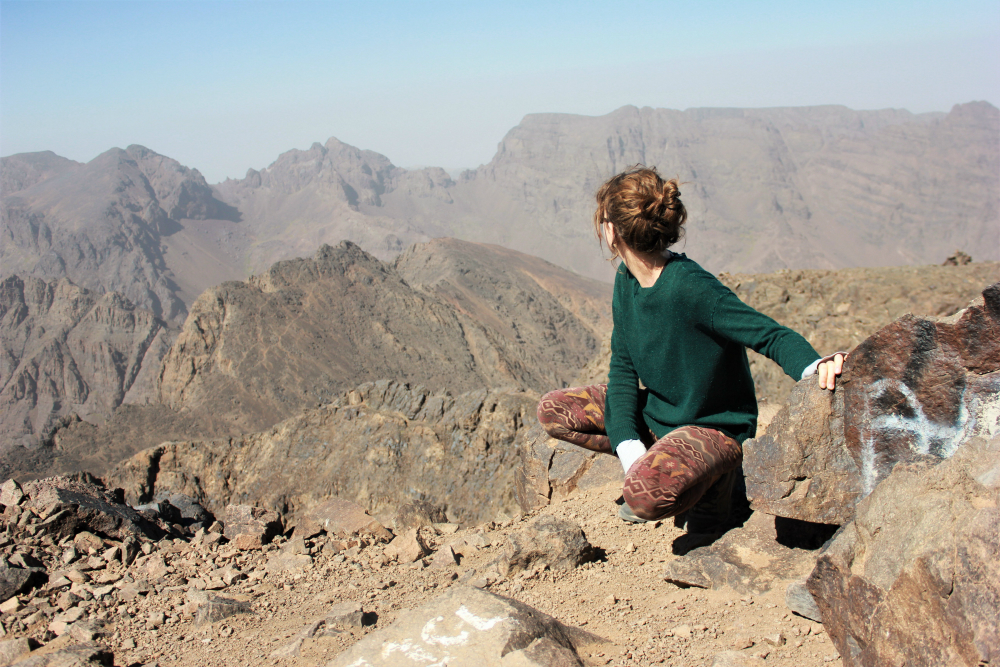
How high is Mount Toubkal?
Mount Toubkal, also known as Jebel Toubkal, is 4,167 metres tall (13,671 feet). It’s in the High Atlas Mountains of Morocco and is the tallest mountain in North Africa.
For comparison, Mont Blanc (Europe’s highest mountain) is 4,810 metres, with Kilimanjaro at 5,895 metres and Mount Everest at 8,848 metres.
How hard is climbing Mount Toubkal?
Toubkal (pronounced “tub kal”) requires no technical climbing and most people in good physical condition should be able to make the climb, so long as they are well prepared. But this isn’t an easy climb! Injuries and even fatalities do happen.
One of the difficulties of Toubkal is altitude sickness. At the peak, you’re only getting roughly 60% of the oxygen that you would at sea level, making altitude sickness a possibility. It’s recommended that you climb the mountain over two days to acclimatise. We did Toubkal over 2 days, but on the second day (the ascent) we still had headaches from the altitude.
When is the best time to climb Mount Toubkal?
The best time to climb Mount Toubkal is in the spring (April or May) or the autumn (September or October). We climbed Toubkal during September. There was no snow or ice on the mountain at this time of year.
Climbing Mount Toubkal in the summer is difficult due to the heat (June, July and August). Climbing Mount Toubkal in the winter is much more dangerous due to the snow and ice (November, December, January, February and March).
Whenever you climb, check the Toubkal weather forecast before you go.
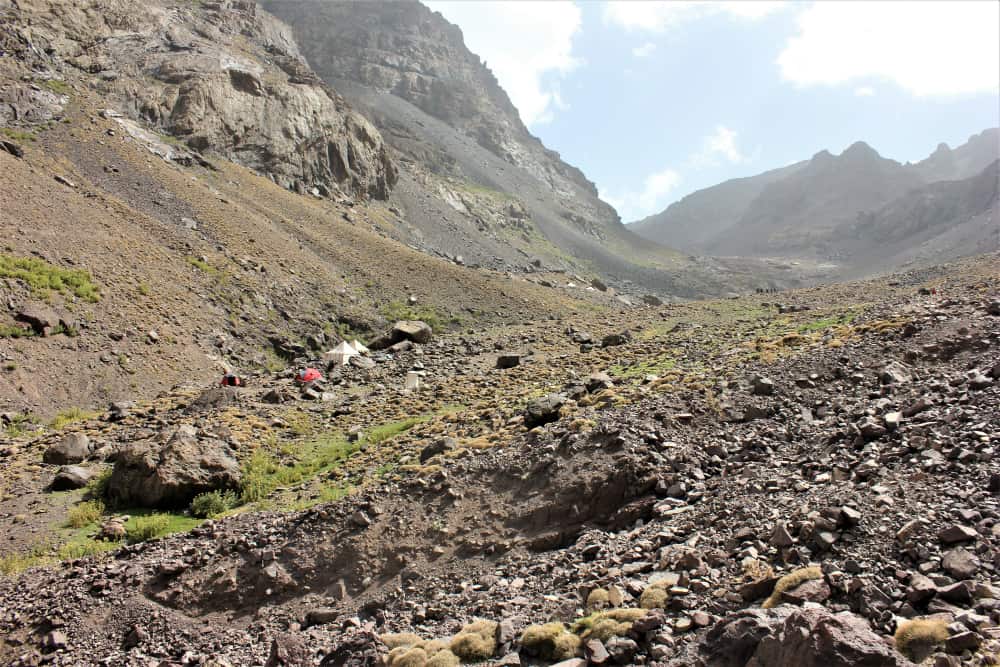
Can I climb Toubkal without a guide?
We climbed Toubkal without a guide in 2017. But in December 2018, two tourists were murdered in a suspected terrorist attack and their bodies were found near the village of Imlil. While there is no guidance on the government website, we’ve been told that the local authorities now insisting that all tourists climb Toubkal with a guide. Prior to this attack, the last terrorist attack in Morocco was in 2011.
You can use Get Your Guide to find experienced local guides and guided tours of the Atlas Mountains.
Google Map Route from Imlil to Mount Toubkal
Most people spend the night in the village of Imlil beforehand. Imlil is a wonderful Berber mountain town and, it is worth seeing in its own right. I recommend staying at Gite Tizi Mizik: the owner is friendly will look after your bags while you climb the mountain. He’ll also have a hot tagine waiting for you when you come back!
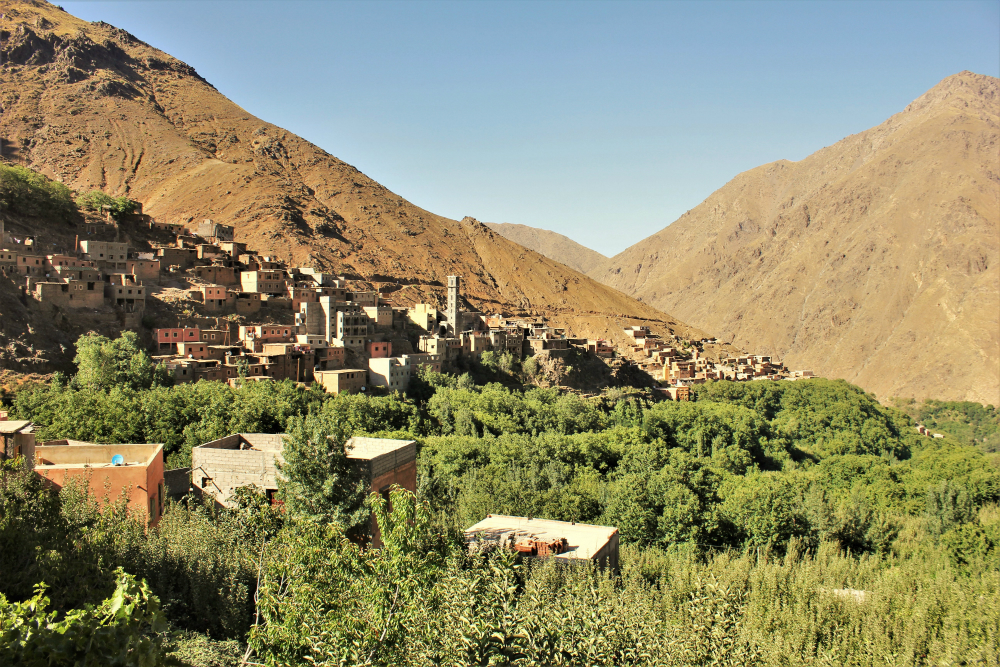
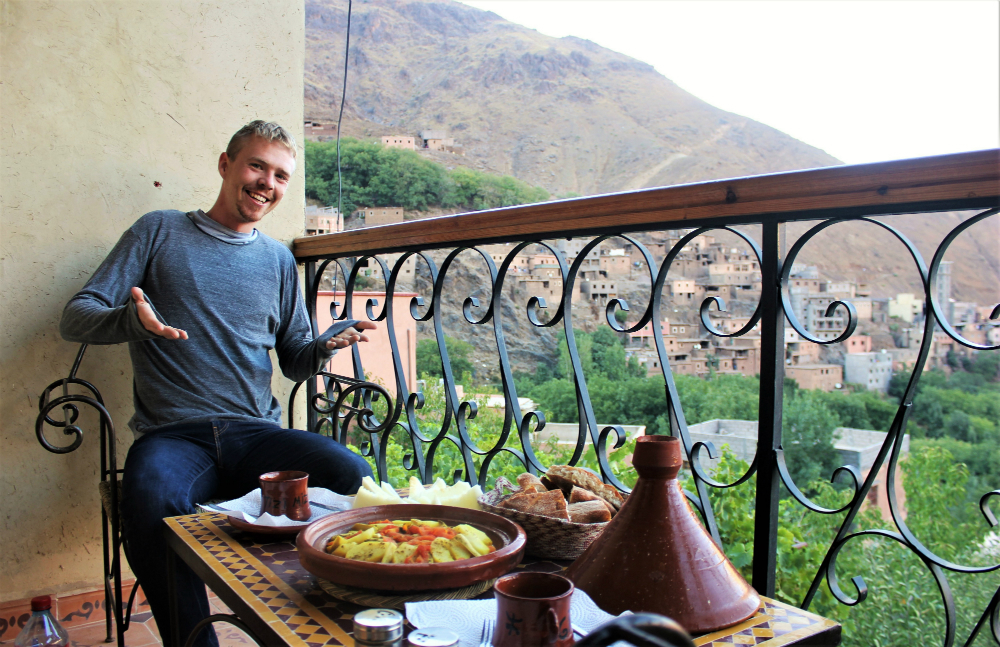
We stayed in the annex room at Gite Tizi Mizik, which has views over Imlil town and the surrounding mountains. The other great thing about this guesthouse is that it’s the last one on the road through to Toubkal, so you can get a head start in the morning and have slightly less far to walk on the way back (which you’ll be glad about, trust me). Book Gite Tizi Mizik here.
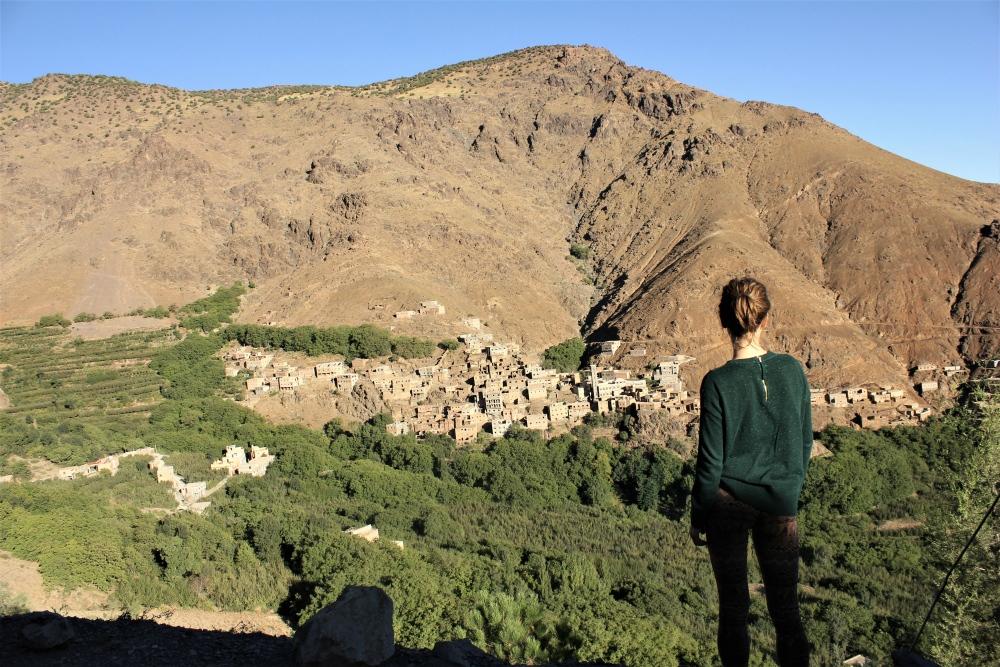
Mount Toubkal Climbing Route
Mount Toubkal should be climbed over 2 days:
Day 1 – Imlil to CAF Refuge
The distance from Imlil to the refuge closest to Toubkal is 10.9 kilometres. The walk from Imlil to the CAF Refuge is around 3-5 hours through the valley. The route from Imlil winds round through the town of Asni and up into the mountains from there. Entry to Toubkal National Park is free. There are vendors selling food and drinks along the way.
The incline through the valley is relatively smooth with only a few areas that are steep. On the second half of the route, the incline is very slight. However, in the heat, the walk is still hard. Make sure to take water, a hat or headscarf and if possible, leave Imlil in the morning or late afternoon to avoid the hottest point of the day.
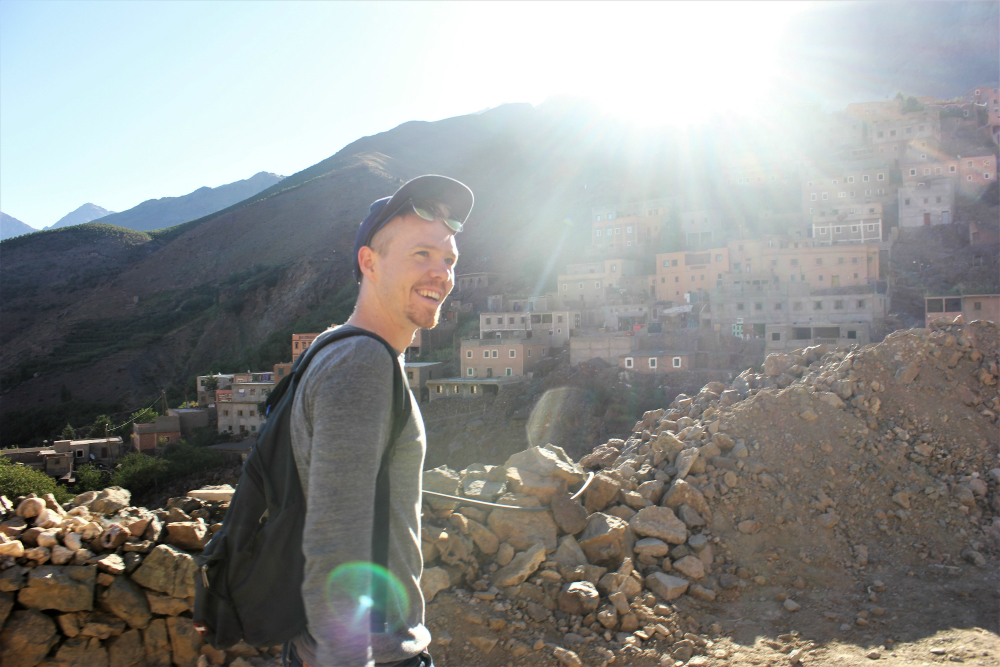
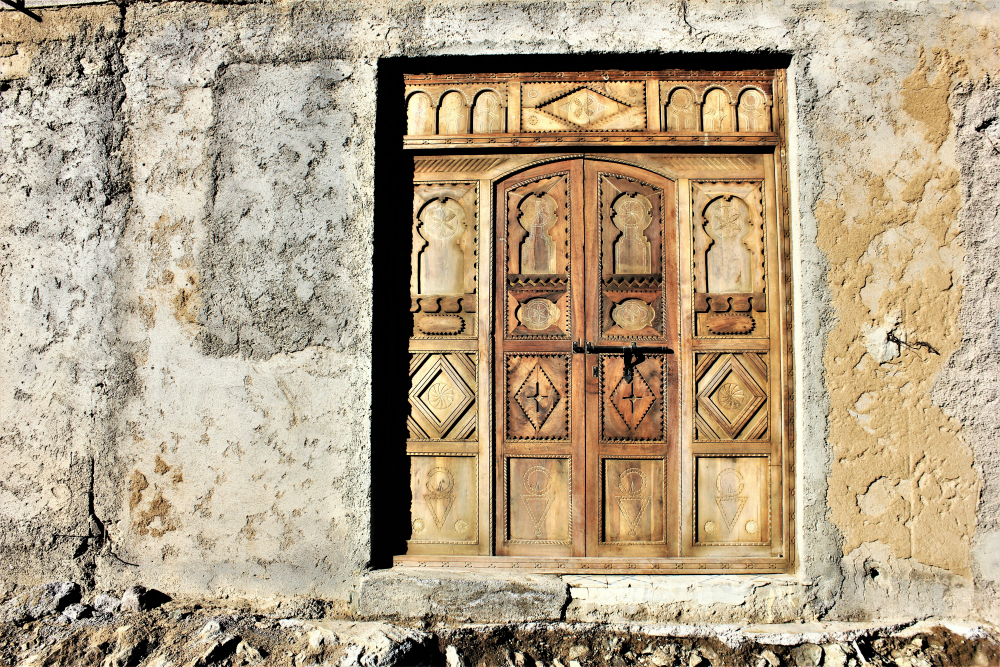
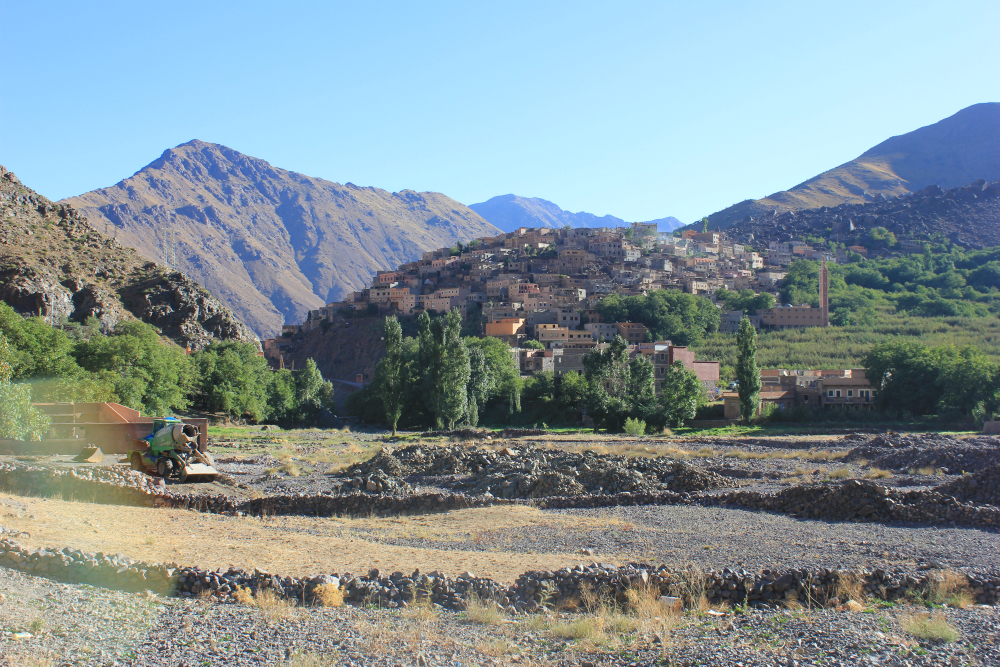
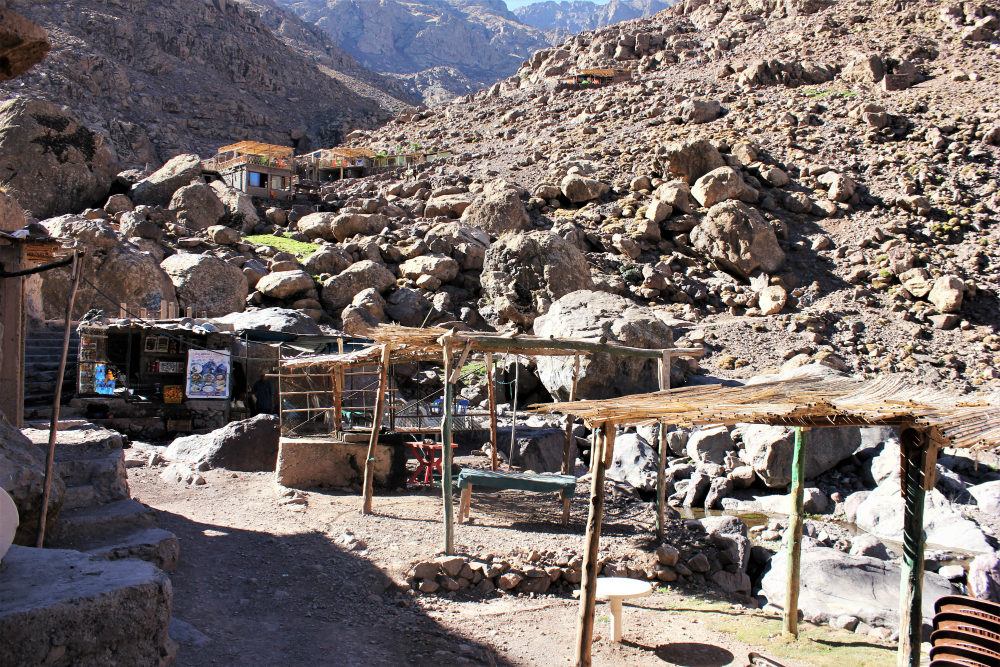

Don’t be tempted to climb Toubkal on the first day unless you’re very fit. We arrived at the refuge around 1PM and were considering continuing up Toubkal, but after a short walk-around the refuge we realised we were more tired out than we thought. Toubkal is steep and mostly scree slopes, so it’s better to start it fresh the next morning. I’d recommend finding the start of the trail and route across the gorge as we managed to spend the first hour of day 2 walking along the wrong path.
Day 2 – Toubkal ascent and return to Imlil
The second day is the CAF Refuge to the Summit of Toubkal, back down and the return walk to Imlil. After spending the night at CAF to acclimatise, you should start hiking at first light the next morning. Sunrise will be from 05:00 to 07:00, depending on the season. You want to cross the river about two minutes after leaving the refuge. Take the left pass and continue left to cross the gorge (it’s easy to miss the path across). Do not walk further up the path through the valley as you will not be able to cross the gorge again and you’ll be heading in the wrong direction.
Toubkal is to the left as you walk up from the refuge (yes, there’s a steep black scree slope – that’s the one you want to go up). Once you’re across the river, climb the scree slopes and boulder fields for what feels like forever. The final ascent isn’t too challenging and the summit is marked by a tripod. It should take you about three and a half hours to walk to the summit, the loose rocks being the most challenging part.
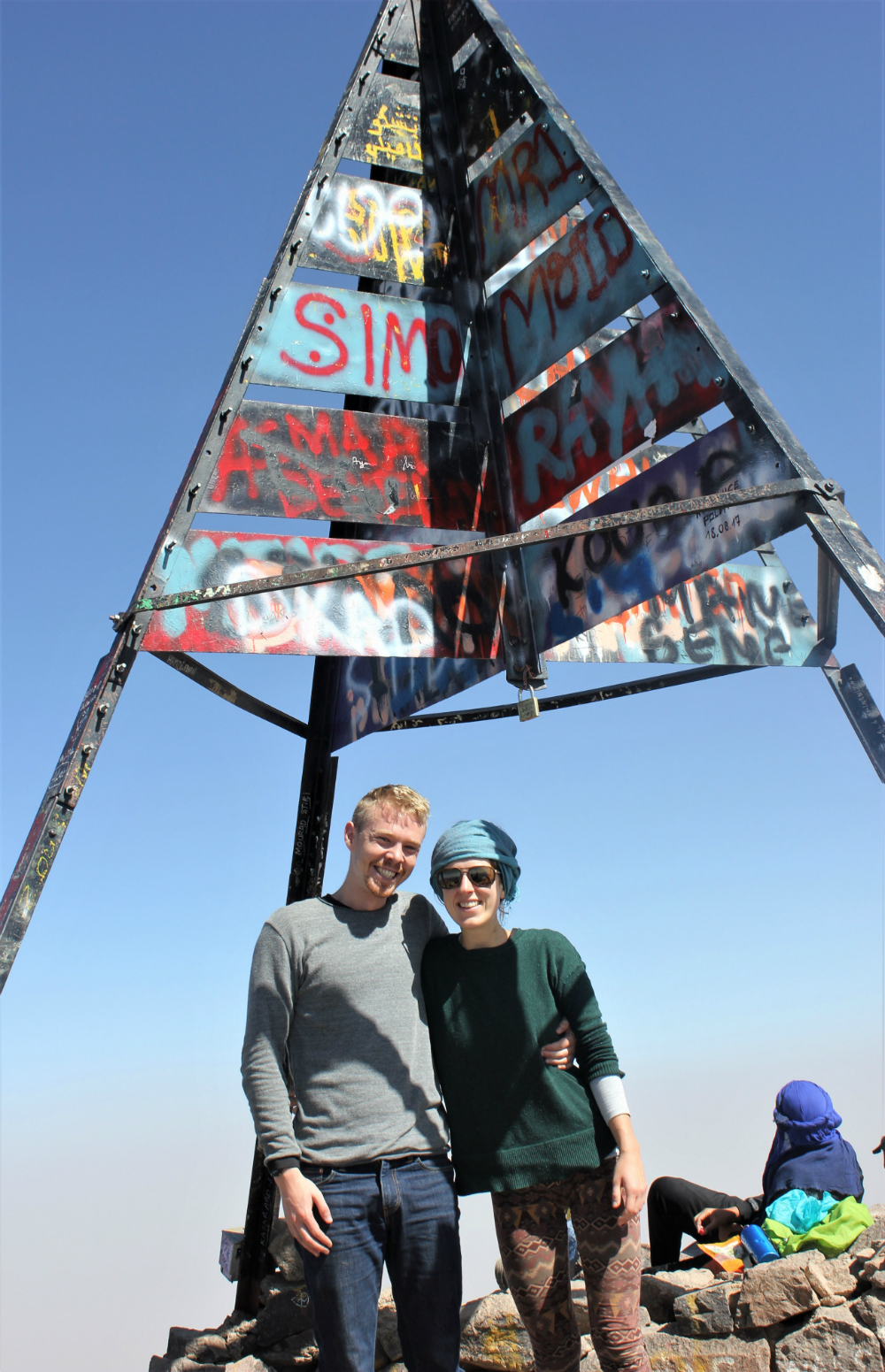

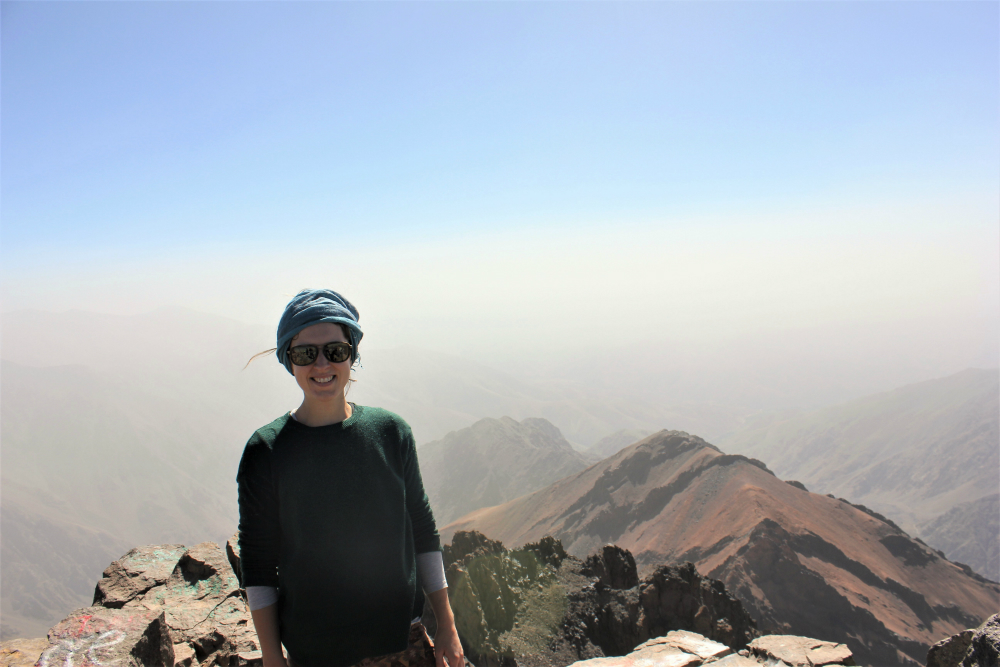
There aren’t great views from the peak, but there are cute goats at the top and that’s the next best thing!
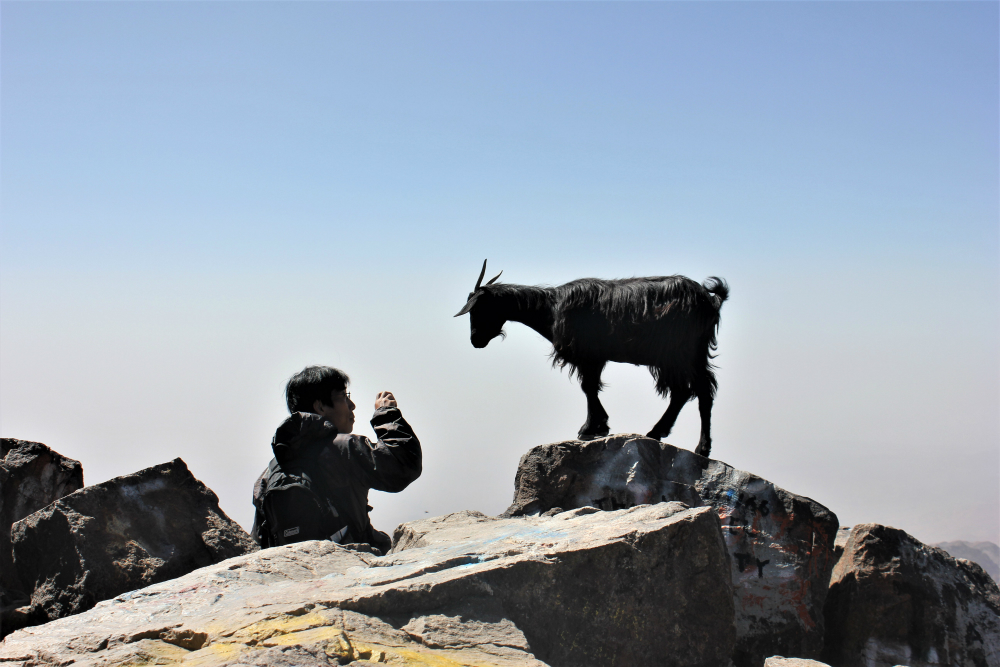
After reaching the summit, you descend Toubkal and continue the 4-hour trudge back to Imlil. The climb down Mount Toubkal is tricky because of the scree slopes that mean you often skid and can fall over frequently. Charlie fell multiple times and cried her eyes out after a particularly rocky landing. Expect to have shaky legs and tricky footing all the way down.
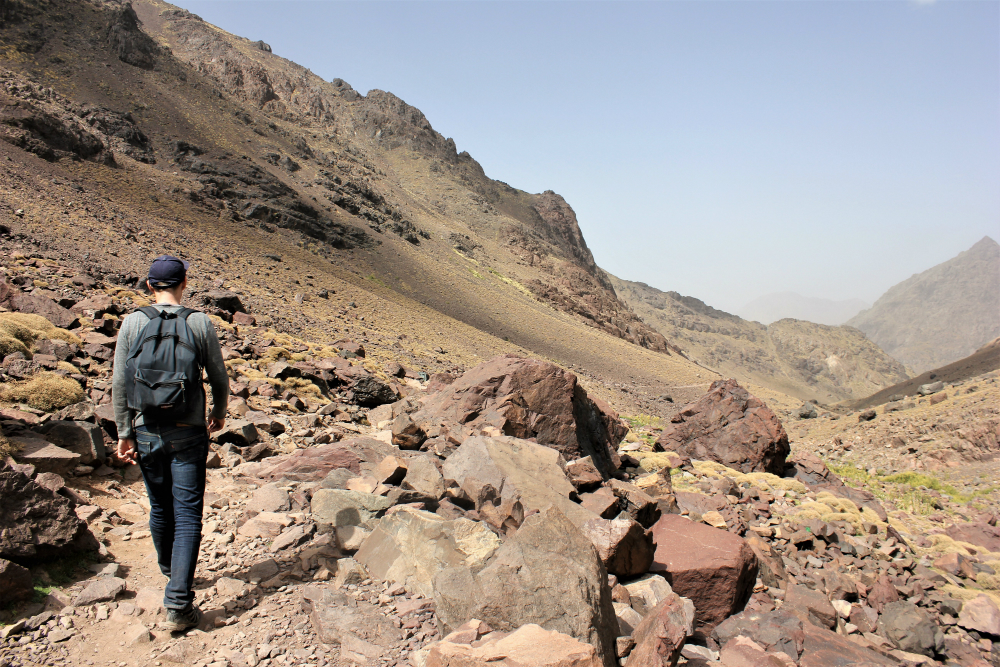
Here’s the walking route from Gite Tizi Mizik to the CAF refuge:
Is there accommodation on Mount Toubkal?
There are two refuges on the climb to Toubkal. They are Les Mouflons and Cabine Alpine Francais (CAF). You can book the CAF Refuge using the link above, but there is nearly always space at the refuge when you arrive. We didn’t book in advance when we did the hike.
CAF costs 140 Moroccan Dirhams (MAD) per night. That gets you a dorm-style bunk bed (no blankets!). Showers are cold, toilets are lacking toilet paper and soap. The staff are friendly.
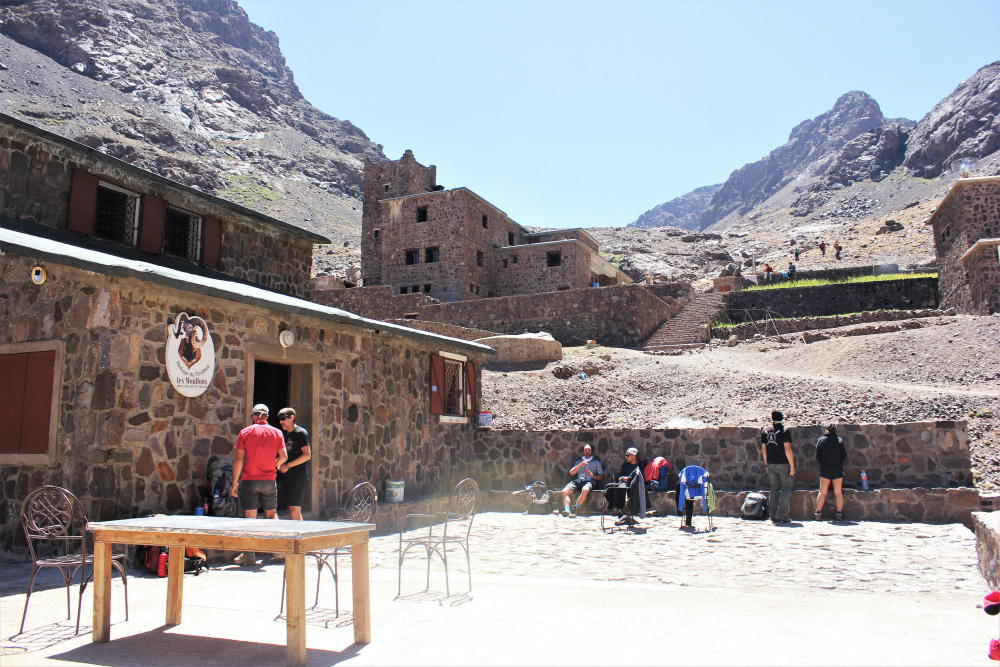
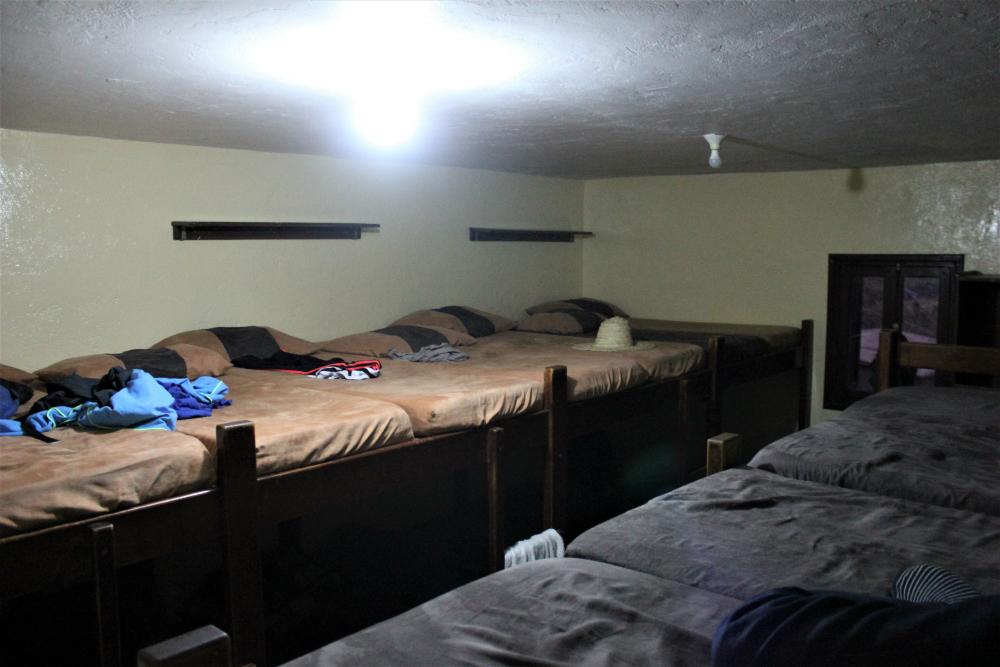
If you have your own gear, then you can camp outside the refuge in the camping ground. To be honest, this looks much nicer than sleeping inside the refuge!
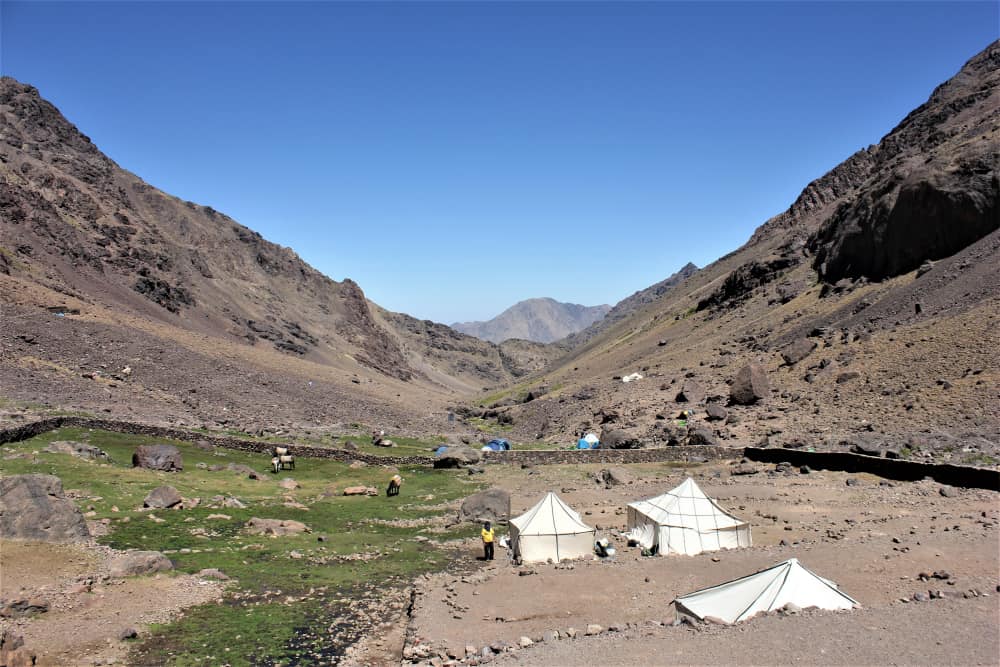
Breakfast is 30d (don’t bother), lunch is 50d and dinner is 50d. We got stale bread and jam for breakfast, plus instant coffee. Dinner was better: soup, spaghetti with a little sauce, chips and chicken for the meat eaters.
I’d recommend bringing your own breakfast and snack foods from Imlil. The refuge has limited supplies and the snacks are dry junk foods like biscuits and fizzy drinks. Bring your own apples, oranges, nuts, dried fruit and msemen (Moroccan square flatbreads) to eat for breakfast and as snacks during the hike.
What should you wear when climbing Toubkal?
For April to October, pack the following:
- Windproof jacket
- Hat
- Sunglasses
- Light fleece
- Long-sleeved top
- Trousers
- Socks and underwear x2
- Hiking boots
- Backpack
- Light sleeping bag / blankets
- Water (at least 3 litres per day, you can refill at the refuge)
- Sun cream
- Lip balm (your lips get dry in the sun and wind)
- Toilet paper
- Toiletries
- Painkillers
- Phone / charger (some earphones and podcasts wouldn’t go amiss)
- Snacks (we went for dates and dried apricots, which were excellent snacks)
- Camping equipment (optional)
- Headlamp / torch and spare batteries (optional)
- Trekking poles (optional)
- Quick-dry towel (optional)
Note that you can rent second-hand equipment in Imlil.
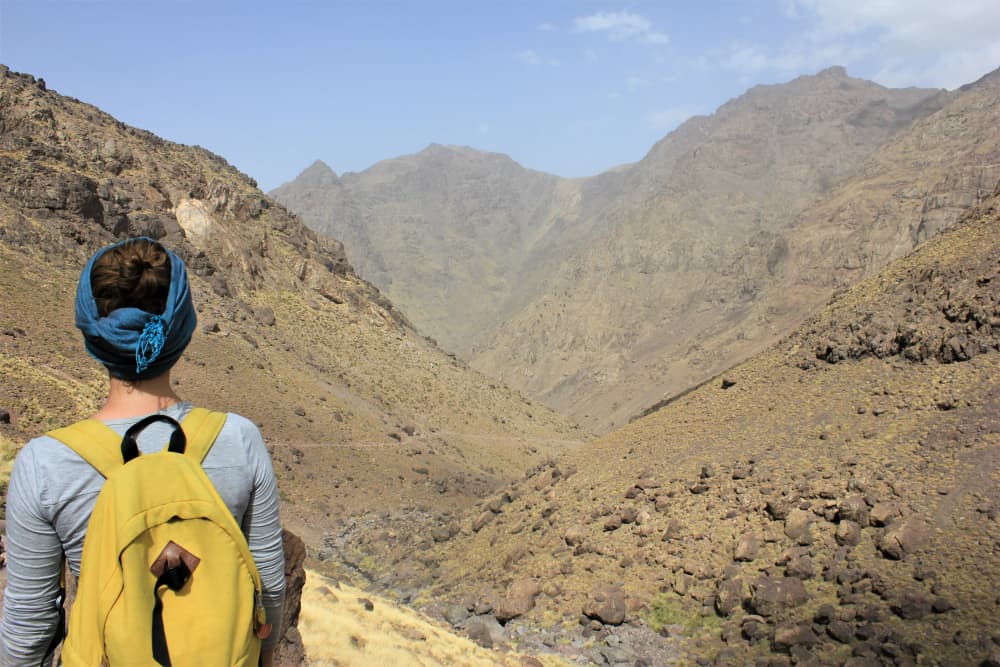
How to get to Toubkal from Marrakech?
For the trip from Marrakech to Imlil, you can either take a shared taxi (known as a grand taxi) for 75 d per person, or a private taxi for 220 d. At least, that’s what we negotiated! If your bargaining skills are better than ours, you might get a better deal! The grand taxi station is by Sidi Mimoun Garden.
There’s no direct bus from Marrakech to Imlil. Instead, take a bus from the Gare Routiere de Marrakech to Asni. From Asni, you can take a minibus or a taxi the rest of the way.
LIKE IT? PIN IT.
This post is sponsored by High Atlas Hiking, a local travel company based in the High Atlas.
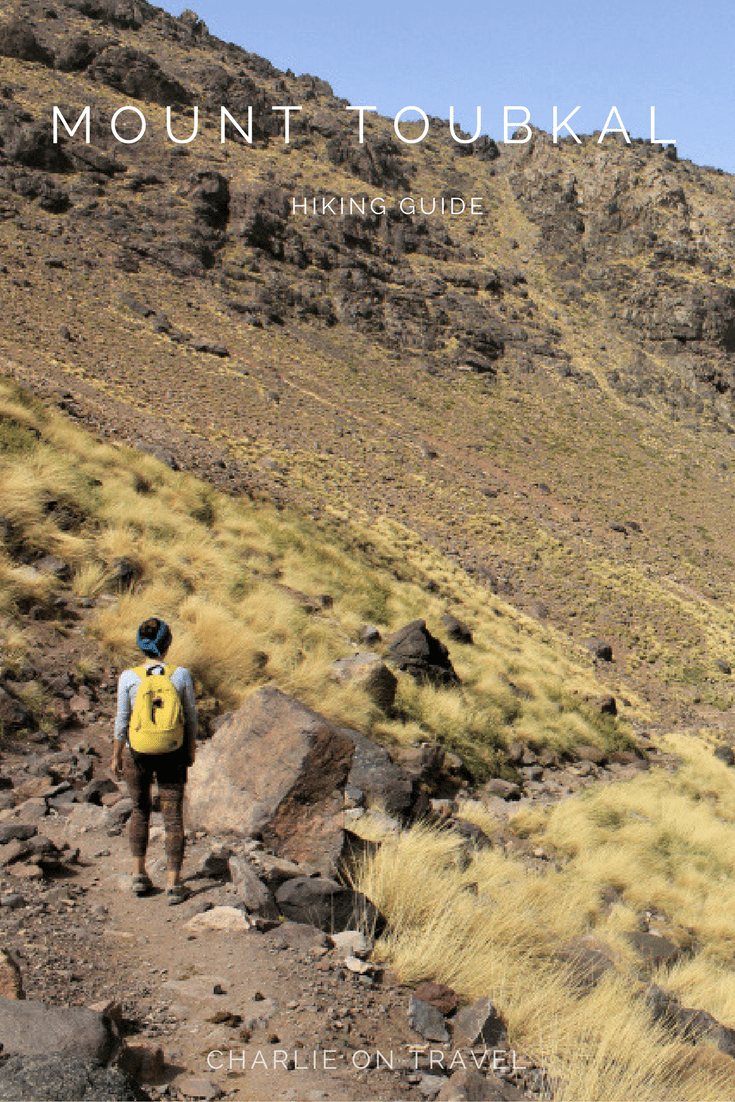

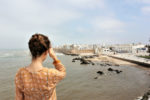
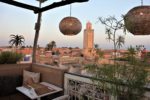
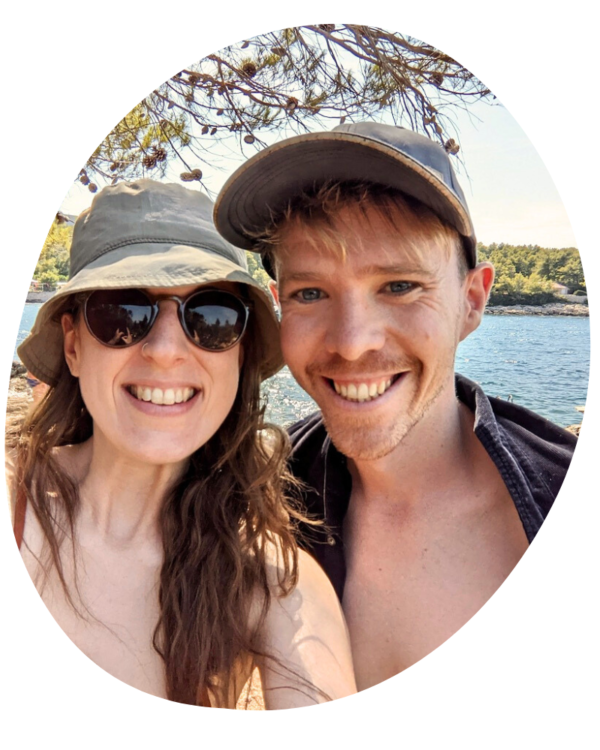


Alex
Great overview! Is the trail easily marked? Is it advisable to bring a map? Also we plan to go in September as well, was it too hot? Thanks again!
Luke
Hey Alex! Glad you found the post useful.
The only time we were in danger of losing the trail was early in the morning when it was dark and we couldn’t see any other hikers. We immediately lost the trail which cost us about an hour! Once the sun’s up, you should be able to find the trail without too much difficulty, but you’ll be dealing with the heat instead. I didn’t use a map so I can’t comment on how useful one would be. If you’re worried about getting lost, you can hire a guide.
As for the September sun, it was very hot, which is why most people leave before sunrise. Ideally, you’d get a fair chunk of the ascent done before it gets too hot. Once you’re higher up, the heat isn’t a problem. Going downhill in the sun isn’t so tricky either.
Gloria
Hi Luke, I am going in two-week time – Jun 8! Watched some video online, seems there is ice along the trail even in May/Jun – seems you didnt come across any in Sep?
Luke Nicholson
Hi Gloria, good luck with your climb!
There was absolutely no trace of ice or snow in September. We were worried that it might be cold at the top, but by the time we got there it was warmish. I’ve not been up the mountain in May or June so I can’t say whether or not ice is normal at that time of year.
fiona
Hi Luke,
How did you manage your luggage or your stuff whilst climbing and trying to reach the summit? I can see on your photos that you are just wearing a small backpack. How did you manage to decide what to bring and what to leave behind while doing the trek? Unless there is a porter for hire that you can tag along who will carry your other baggage while climbing? Do you think November is a not a perfect time to climb? Is the climate in Mt. Toubkal the same here in the UK during November? I mean, is it as cold as it is here?
Very helpful blog btw. Hope to hear from you. Thanks.
Luke Nicholson
Hi Fiona,
I’m sorry for the late reply, I actually wrote something out for you but I must have forgotten to press publish and I only just noticed right now.
In answer to your questions, we left out baggage at Gite Tizi Minik, which was the guesthouse where we stayed while in Imlil. They were very friendly and prepared us a big meal after our climb. There are certainly porter services which you can arrange from Imlil.
I’ve not climbed in November, so I can’t say for sure, but I reckon that you might be okay in early November. You could potentially get frost in late November, which will make climbing a lot more difficult and not safe for inexperienced climbers.
Sam
Hi Luke,
Very helpful post. I am thinking about going in January though might be on my own so will possibly need a guide for safety. Trying to avoid pre booking a tour before going as they seem pricey. Did you take note of any local guides available at either Imili or around the refuge, and have any idea what they might cost?
Thanks for the help!
Luke Nicholson
Hi Sam,
No, I’m afraid I didn’t get any prices for guides. I don’t know for sure, but I’m almost certain it’ll be cheaper to arrange a guide when you are in Imlil rather than pre book a tour in advance.
If you are planning to climb the mountain by yourself in winter, then I strongly recommend you do hire a guide! Accidents do happen and you wouldn’t want to find yourself stuck on the mountain with a twisted ankle…
Good luck!
Joseph
Hey Luke,
Looks like climbing Toubkal on September is totally different experience than I had. You had thin sweaters and I had to wear proper winter jacket :D Also, totally agree with you about breakfast in CAF, it is not really worth it, better have your own food. Although, dinner was amazing – huge portion of spaghetti with chicken and fried potatoes.
Joseph.
Luke Nicholson
Hi Joseph,
That’s interesting, what time of year did you go? Was it also a September trip?
KEITH BUCHHOLZ
I will be part of a guided tour for Mount Toubkal from September 6 to 12, 2019. Different reviews have a variety of views on the temperature on the way to the top. So not sure about packing?
Will I need additional layers other than the recommendations in this forum? I believe our extra gear is carried for us but didn’t want to over pack.
Thanks
Keith
Luke Nicholson
Hi Keith,
For my climb, which was also in September, a light fleece and a windbreaker was more than enough. If you’re worried, you could pack a winter jacket just in case.
Anna
Hi Luke
I’m going in September and am very excited! I have done quite a few treks around the world so am reasonably experienced, but I still get a bit nervous when I have to hike alongside sheer drops and steep falls for a prolonged period of time. How much of this is there on the way up Toubkal? Is most of it up the valley or do you hike along ridgelines at all?
Thank you!
Anna